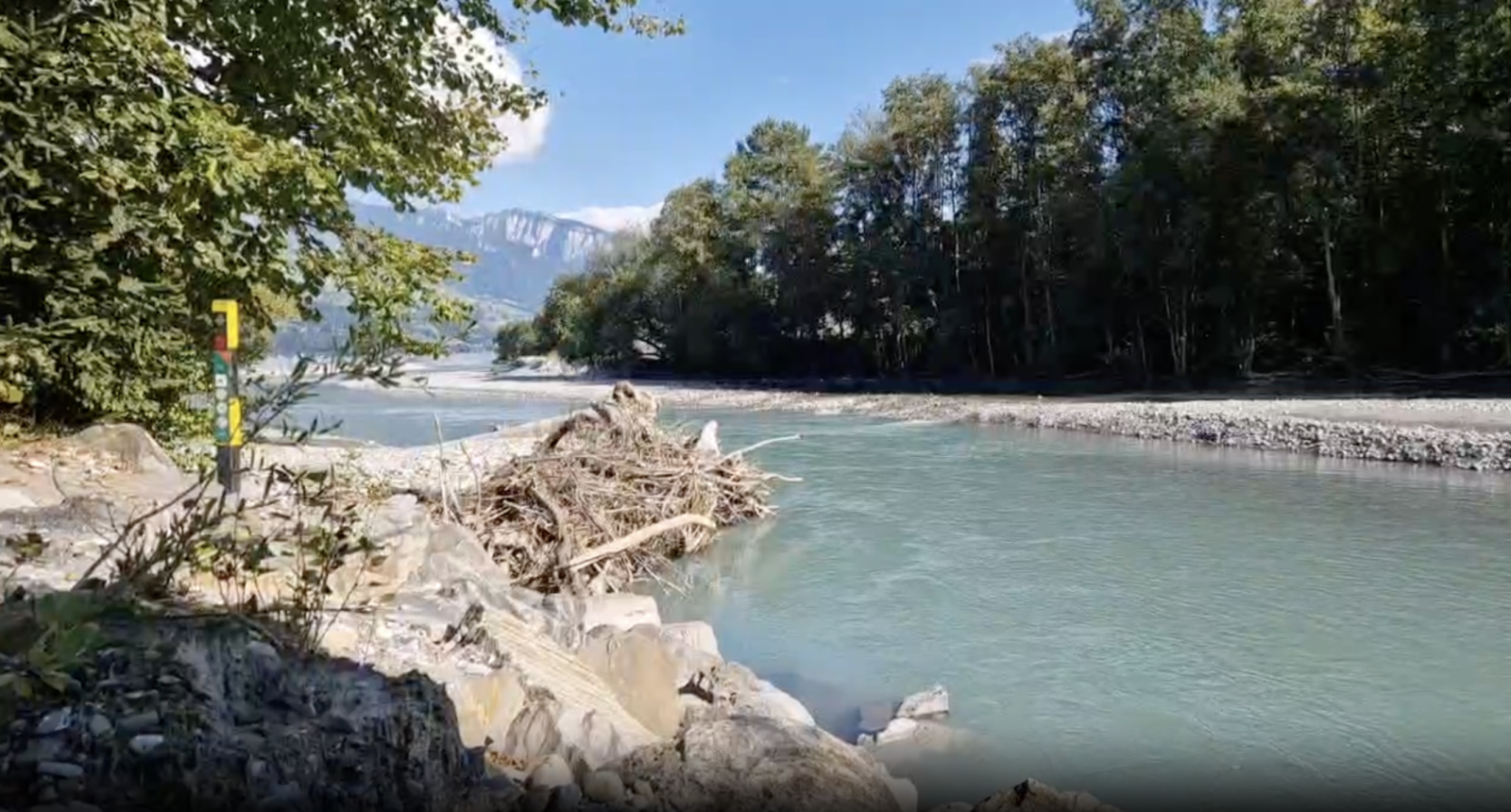Description
The Kanderdelta is an artificial delta created in the 18th century. Before its construction, the Kander River bypassed Lake Thun entirely. The river deposits substantial amounts of gravel into the delta and the lake, necessitating regular gravel extraction. At the same time, these gravel banks have become one of the few remaining breeding sites for the mali deževnik in Switzerland.
The delta features a dynamic mix of floodplain forests, still and flowing waters, gravel banks, and steep riverbanks, forming a unique and valuable natural habitat - a rarity in Switzerland. This exceptional ecosystem lies close to the city of Thun, resulting in conflicts between recreational use and conservation efforts. While the lakeshore is accessible year-round, there are even dedicated barbequing areas at the outer edge of the delta. A ranger frequently patrols the area, offering useful information to visitors.
Although the mali deževnik is the region's flagship species, over 200 bird species have been recorded here. The steep banks provide nesting sites for vodomec and povodni kos. In the floodplain forests, breeding birds like mali detel, kukavica, and possibly škrjančar, which can be observed from April to September, find their habitats. kobilar and slavec are relatively common, possibly you might see a kvakač or mala bela caplja. čopasta čaplja has also been observed.
Waders and waterbirds use the delta as a stopover during spring and autumn migrations. The zelenonogi martinec is among the most frequent visitors. Other common sightings during migration seasons include močvirski martinec, pikasti martinec, komatni deževnik, and mali prodnik. Less common species like kamenjar and Temminckov prodnik make appearances. During these times, the reeds are utilized by plašica and rjavi lunj.
In spring, the delta additionally hosts rdečenogi martinec and togotnik, as well as mali škurh and črnoglavi galeb. Inland, pogorelček finds refuge in the floodplain forest. Later in spring and into summer, the grmovščica appears here, and over the lake, migrating črna čigra can be spotted. Exceptional sightings include its relatives, the beloperuta čigra, belolična čigra, mala čigra, črnonoga čigra, and kričava cigra.
In late summer, the rare peščenec is occasionally reported, while from September through May, duplinska kozarka can be seen resting on the lake. Autumn brings irregular sightings of črna prosenka, followed later by the more frequent spremenljivi prodnik. From winter to spring, žličarica and žvižgavka rest on the lake, but rarer birds are also possible, as one sighting of zimska raca proves.
The Kanderdelta is also a hotspot for rare waders. Eight confirmed sightings of školjkarica have been recorded in April and June. Other notable species include veliki prodnik, sabljarka, beloceli deževnik, and Prlivka. Additional rarities such as rjava cipa, ledni slapnik, rumeni vrtnik, zlata prosenka, kratkoprsti škrjanček, ozkokljuni liskonožec, zlatouhi ponirek, rdeca lastovka, bodičasta govnačka, velika govnačka, lastovičji galeb, and puklež have also been observed.
Details
Access
The Kanderdelta is easily accessible by bus from Thun (stop: Einigen, Kanderbrück). A parking lot is also available a few hundred meters away (Press P on the map). The area can only be explored on foot via a narrow path. This trail is not marked on maps and leads along the strictly protected Kander (1), where the mali deževnik nests on the gravel banks, through floodplain forests, and past a still water body created by gravel extraction (Unteres Kandergrien), which is often visited by herons (2), to the delta (3).
Depending on the water level, the 30 to 40-meter-wide shoreline strip of the delta can be walked on. However, it’s obviously preferable not to disturb or approach any wading birds that might be present. On the other side of the Kandergrien, there is a meadow for lounging (4) with a good view of the lake, and a kiosk operates there during the warmer months.


